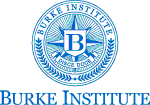|

The Burke Institute
presents
Tools & Techniques of Data Analysis On-Site Training
This intensive seminar uses a step by step procedure composed of several decision flow charts to help you select and implement the correct statistical techniques for your problems
Course Description/Agenda
WHAT YOU WILL LEARN
- How to develop an analysis plan for a study by linking management decisions and information needs to the available data.
- How to choose the best univariate, bivariate or multivariate statistical techniques to analyze data from virtually any marketing research study.
- How to summarize marketing research data and translate it into decision making information.
- What statistical significance tests do, how to choose the right one, how to interpret typical computer output and how to relate the results to the marketing questions.
- How to compute sample size.
- How to select the best procedure for determining associations among marketing variables and how to interpret and use correlation coefficients.
- How to clean and weight the data so that you can trust the results and act with the data
WORKSHOP AGENDA
SESSION 1: BUILDING THE CASE FOR HOW TO BEST ANALYZE RESEARCH DATA
- Case study examples of improper/deceptive manipulations of data and their consequences
- How to interpret the data from the case studies
- Common errors made in data tabulations, summary measures and other analytical procedures and how to avoid them
SESSION 2: FUNDAMENTAL PRINCIPLES FOR ANALYZING DATA
- Purpose and goal of data analysis
- Data analysis impact on research design
- Characteristics of data and other considerations required for selecting the best analytical procedure for each situation
SESSION 3: STEP-BY-STEP GUIDELINES FOR SELECTING THE BEST ANALYTICAL TOOL
- Integrated flowcharts for choosing the best analytical tool
- Workshop using the flowcharts to apply the tools to a wide variety of situations commonly encountered in marketing research, such as:
- Summarizing research data and stat testing
- Deciding when to use t, chi square, f and other tests
- Choosing correlational procedures and deciding when to use factor, cluster, conjoint, regression, and other multivariate techniques
SESSION 4: UNDERSTANDING CROSSTABS AND DATA WEIGHTING ISSUES
- Using crosstabs to analyze data
- How to avoid common mistakes with tabular data
- Common procedures for weighting data
- Practical guidelines for getting the most out of crosstabs
SESSION 5: SUMMARY MEASURES FOR RESEARCH DATA
- Use and misuse of various measures of average and dispersion
- Practical guidelines for the proper interpretation of mean, weighted mean, median, standard deviation, variance and other measures
- Confidence interval estimation -- what is it, what does it do and what is it used for?
- Procedures for computing sample size under a variety of conditions encountered in marketing research
SESSION 6: STATISTICAL SIGNIFICANCE TESTING
- The framework for significance testing
- Cautions in interpreting results from tests of significance
- Key decisions in significance testing, one-tailed vs. two-tailed tests, confidence vs. significance level and other considerations
- Description of procedures for analyzing nominal, ordinal and metric data from panels, preference evaluations, purchase likelihood, tracking studies, product testing, advertising awareness and other studies
SESSION 7: ANALYSIS OF ASSOCIATIONS IN RESEARCH DATA
- Bivariate correlation procedures for various types of research data
- When to use and how to interpret each coefficient
- Key terms and definitions for correlation analysis
- Association case studies and computer output examples
|
 Add to favorites
Add to favorites
 Email this page
Email this page
|